- Have you ever wondered if your dog is really getting the most joy—and enrichment—from playtime outside? Explore the best outdoor dog games that go far beyond a simple game of fetch, and discover new ways to keep your dog active, healthy, and engaged.
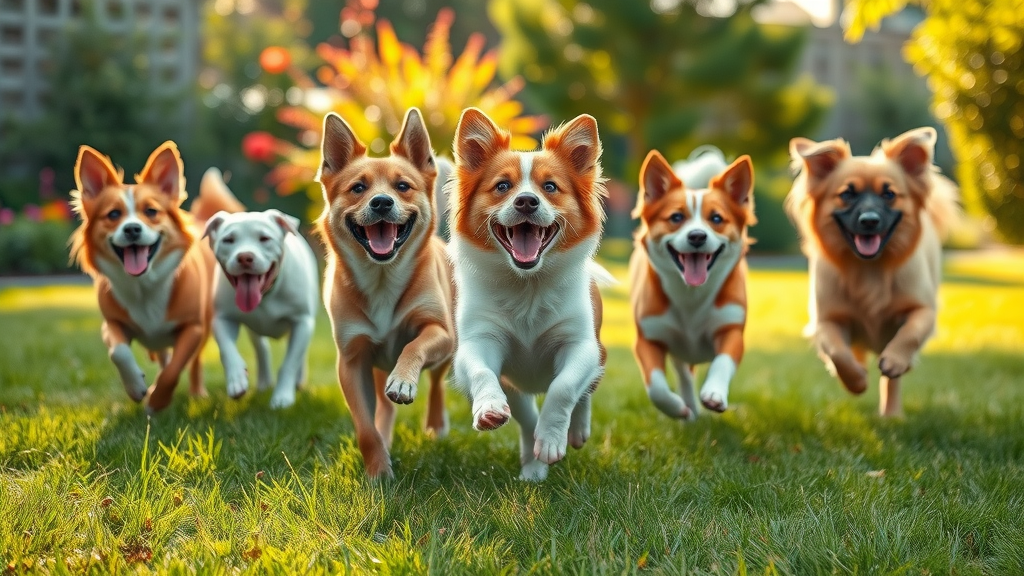
Why Outdoor Dog Games Matter: Health, Bonding, and Endless Fun
- The role of outdoor dog games in physical and mental well-being
- How outdoor games for dogs strengthen the human-canine bond

- Benefits for all breeds and ages: from puppies to senior dogs
Playing outdoor dog games isn’t just a way to fill time—it’s a vital component of your dog’s physical exercise and mental stimulation. When you regularly schedule outdoor games for dogs , you’re not only helping to burn off extra energy but also ensuring your fur baby remains mentally sharp and emotionally balanced. These games provide opportunities for training, confidence building, and learning new commands in a fun, pressure-free environment. Plus, the sheer excitement of trying a new game or mastering an obstacle course turns every backyard session into an adventure.
Beyond the physical benefits such as weight management and cardiovascular health, engaging your pup in games to play outside solidifies the lifelong bond between human and canine. Interacting through games like tug of war or treasure hunts fosters trust and responsive listening, helping even the most energetic or shy dogs to connect with their families. Every dog, from bouncy puppy to wise senior, finds their groove and joy through these thoughtfully chosen outdoor games.
What You'll Learn in This Guide to Outdoor Dog Games and Activities
- Top 15 outdoor dog games for every personality
- Creative outdoor games for dogs that provide mental stimulation and exercise
- Step-by-step instructions for the most engaging games for your dog
- Expert tips on safety, equipment, and adapting games for different dog breeds and energy levels
The Essential List: 15 Best Outdoor Dog Games That Dogs Love
1. Obstacle Course Challenge: The Ultimate Outdoor Game for Dogs
- DIY outdoor obstacle course ideas for dogs
- How to build safe, stimulating backyard courses
- Teach your dog agility and basic commands through structured play
Transform your yard into an exciting obstacle course using common items like hula hoops, cones, cardboard boxes, and broomsticks. Start with simple layouts—dashing around cones or jumping through a hula hoop—then add complexity as your furry friend gains confidence. Always keep safety in mind: use non-slip surfaces and avoid sharp objects. Not only is this a fantastic source of physical exercise , but building a course allows you to teach your dog agility basics and boost problem-solving. Practice commands such as ‘sit,’ ‘stay,’ or ‘weave’ at each obstacle, rewarding your pup with dog treats for a job well done.
The obstacle course is a terrific outdoor dog game suitable for all breeds and ages. You can adapt the setup for puppies and senior dogs by lowering jumps and using softer surfaces. With regular sessions, you’ll notice improvements in your dog’s focus, coordination, and overall confidence—a perfect blend of physical and mental stimulation .
2. Fetch with a Twist: Turning a Classic Outdoor Dog Game into an Adventure
- Creative variations: rotating toys, fetch relays
- Mental stimulation tips while playing fetch
While playing fetch is a classic, you can invigorate it in countless ways. Change up the toy—rotate between a tennis ball, rope toy, or squeaky plush to keep interest high. Create “fetch relays,” where your dog must deliver each object back to a different family member. Or, add difficulty by hiding objects for a treasure hunt fetch, prompting your dog to use their nose and problem-solving skills. Throughout, sprinkle in obedience cues (like “drop it” or “wait”) to train your dog as you play. Fetch, especially with these spins, provides unmatched physical stimulation and taps into your dog's natural chase instinct.
3. Tug of War: Strengthen Bonds with Interactive Outdoor Games
- Safe ways to play tug of war outdoors
- When to incorporate obedience training into this game
Tug of war is a perennial favorite, blending excitement, strength-building, and relationship deepening all into one great game. Always use a sturdy rope toy, and establish rules before you start (“drop” and “take it” are essential for dog training ). This energetic outdoor game enhances impulse control and teaches your dog to follow commands even when aroused. Remember, play should pause immediately if teeth touch your skin or clothes—consistency keeps the game safe and respectful for every fur baby.
Many dogs absolutely adore tug, as it’s a wonderful outlet for competitive play and a fun way to reward your dog. Rotate between high-energy bouts and calmer cues, reinforcing your bond and their ability to shift gears quickly. Always end the game on a positive note with plenty of praise.
4. Treasure Hunt: Nose Work and Mental Stimulation for Dogs
- How to set up a scent-based outdoor game for dogs
- Boosting intelligence with hidden treats and toys
To play a treasure hunt , scatter small treats, toys, or even bits of peanut butter in discrete spots around your yard. Encourage your dog to “find it,” engaging their powerful sense of smell and natural curiosity. Start with obvious locations and gradually make the game more challenging as your dog learn what “hunt” means. This mental stimulation is crucial for both high-energy hounds and dogs that can’t run or jump as much—solving olfactory puzzles is just as exhausting as a sprint!
Treasure hunts can also double as training exercises, teaching your dog patience, persistence, and reward-based navigation. They’re especially great on a sunny or even a rainy day since you can adapt the setup indoors or outdoors. Watching your dog sniff, search, and celebrate their discoveries is pure canine joy.
5. Water Games: Splashing Outdoor Fun for Dogs that Love to Swim
- Water fetch, kiddie pools, and safe water activities
- Hydration and water safety tips you must know
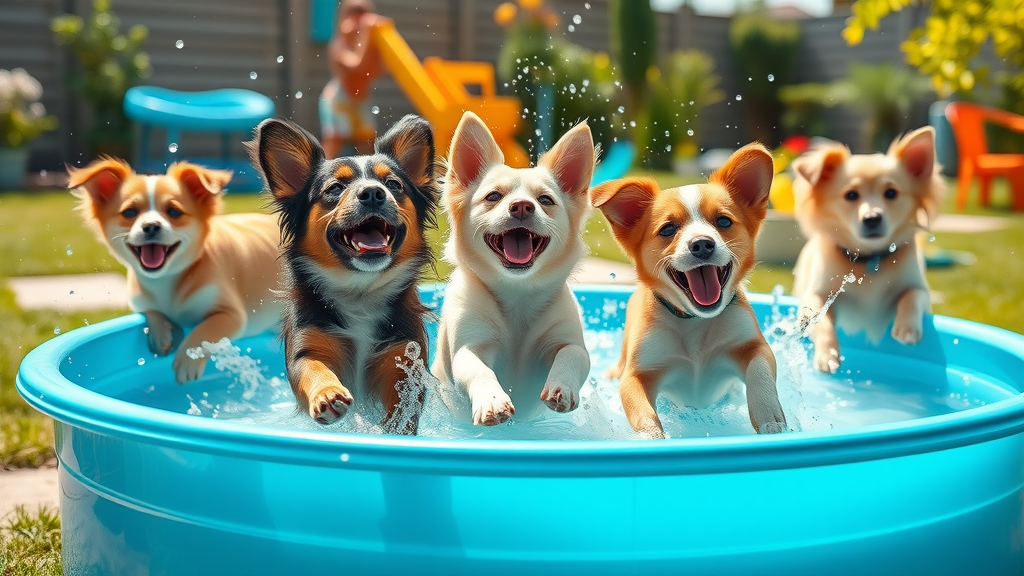
On hot days, water games become the ultimate cool-down. Set up a baby pool for splashing, play water fetch with floating toys, or let your dog chase the gentle arc of a garden sprinkler. Always supervise water play closely, especially with young puppies or breeds unaccustomed to swimming. Ensure the water is shallow and refresh it often. Hydration is key: keep a bowl of fresh water handy and make shade readily available. Water games aren’t just physically refreshing—they’re a fun game for dogs who enjoy new sensory experiences.
6. Hide and Seek: Classic Outdoor Games for Dogs with a Twist
- How to teach your dog to find you or hidden objects outside
- Why hide and seek is great for training recall and bonding
Hide and seek is a timeless game that strengthens recall training and forges trust. Start by having your dog stay while you hide behind a tree or bush—then call them with excitement. Reward your dog when they find you, gradually increasing difficulty as they master the search. This game’s adaptability makes it a favorite for dogs of every age and ability. It’s especially helpful for practicing recall commands amidst distraction, essential for off-leash safety.
You can also hide toys or dog treats instead. This outdoor dog game supports mental stimulation, helps bored pups develop new skills, and deepens your bond each time your dog tracks you down.
7. Frisbee Frenzy: High-Energy Outdoor Games for Athletic Dogs
- Best frisbees for dogs and safe catching tips
- Improving coordination and exercise through frisbee games
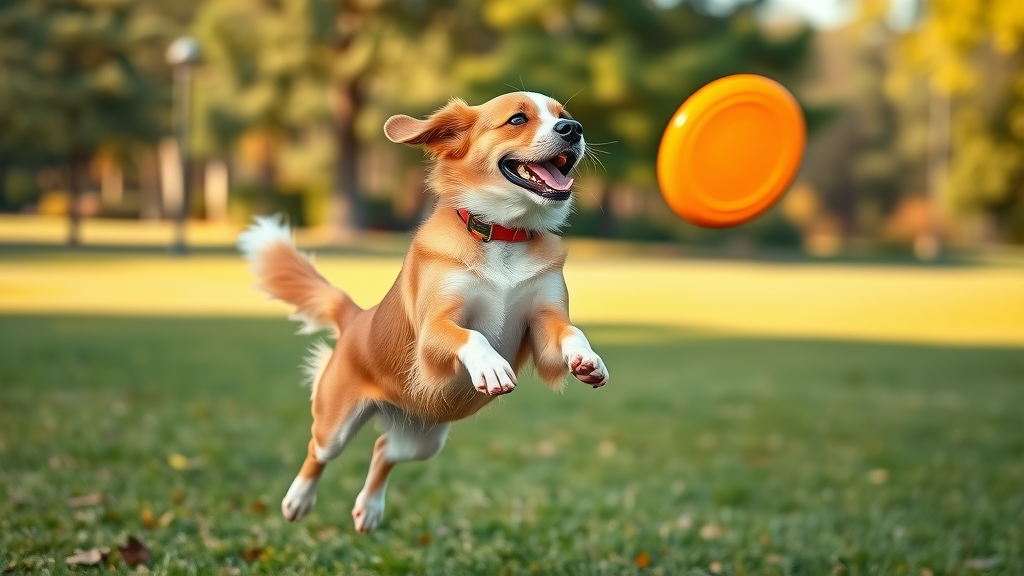
The frisbee is a classic for energetic dogs who love to leap and chase. Seek out durable, flexible discs designed for canine mouths and choose open spaces to avoid obstacles. Start with short tosses, gradually altering distance and height to improve your dog’s timing and coordination—with lots of encouragement for even the clumsiest first attempts. Frisbee is a brilliant way to wear out a high-drive dog, and it can be tailored to match any canine fitness level.
As with fetch, always provide breaks and keep sessions short to avoid overexertion. Be sensitive to your dog's endurance and offer fresh water frequently.
8. Soccer-Style Kicks: Team-Based Outdoor Games for Dogs
- Introduction to dog soccer and interactive play
- How to choose durable dog soccer balls
Soccer-style play is ideal for both solo dogs and family events. Use a tough, non-deflatable dog soccer ball (look for “mentally stimulated” options that roll unpredictably). Teach your dog to “paw” the ball, “dribble” between cones, or simply chase and return shots. This outdoor dog game sharpens agility and teamwork—plus, it lets multiple dogs or family members join in, making it a great game for energy-burning fun.
9. The Muffin Tin Game: Engaging Outdoor Games for Dogs Needing Mental Stimulation
- How to set up the muffin tin game outdoors
- Benefits for mental enrichment and problem solving

For dogs that thrive on problem-solving, the muffin tin game offers a fun challenge. Simply place dog treats in the cups of a muffin tin, cover them with tennis balls, and set the tin on the grass. Your dog must sniff, nudge, and “uncover” each prize, testing both their memory and nose work. This game is flexible—you can scale difficulty for advanced sniffers or use smaller treats to prolong the game. It’s an ideal way to keep your dog mentally stimulated without ruining their calorie count.
10. Nature Walk Adventure: Outdoor Games to Play When Exploring New Trails
- Creative mini-games for your dog during walks (find it, tracking, tree circle relay)
- Safety tips for new environments
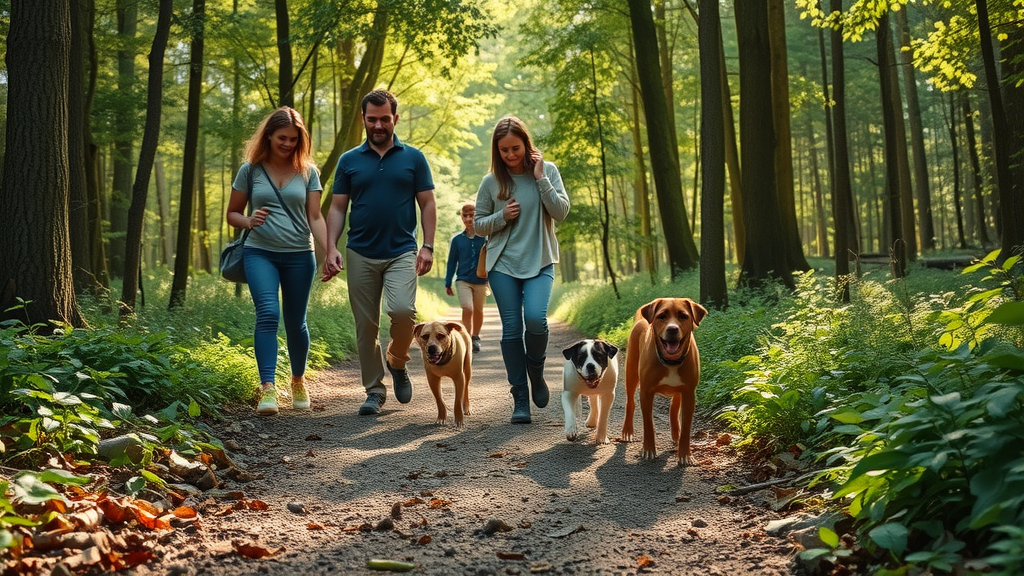
Take a break from the backyard and hit the trails. During walks, try impromptu games like “find it” (toss treats into the brush for your dog to search), tracking exercises, or tree circle races. Hiking exposes dogs to fresh scents, sounds, and terrain, packing mental and physical stimulation into every minute. Safety first: check for tick-prone areas, avoid heat, and always carry water.
Nature walks aren’t just about movement—they open up a new sensory world, ensuring every outing feels like an outdoor game and adventure.
11. Simon Says: Obedience and Dog Training as a Fun Outdoor Game
- Making obedience training fun with quick, engaging commands
- Rewarding attention and impulse control
Merge dog training and play with a round of “Simon Says.” Call out playful commands—sit, down, spin, stay, touch a cone—and shower your dog with praise or a small treat for correct responses. Vary your cues rapidly to keep your dog focused. Apart from being a fun game , this version of outdoor dog games builds listening skills, impulse control, and confidence. End every session on a “green light” by granting your dog’s favorite reward!
12. Bubbles Bonanza: Chasing and Popping as a Delightful Outdoor Game for Dogs
- Dog-safe bubble recipes and how to introduce the game
- Great for puppies and dogs of all energy levels
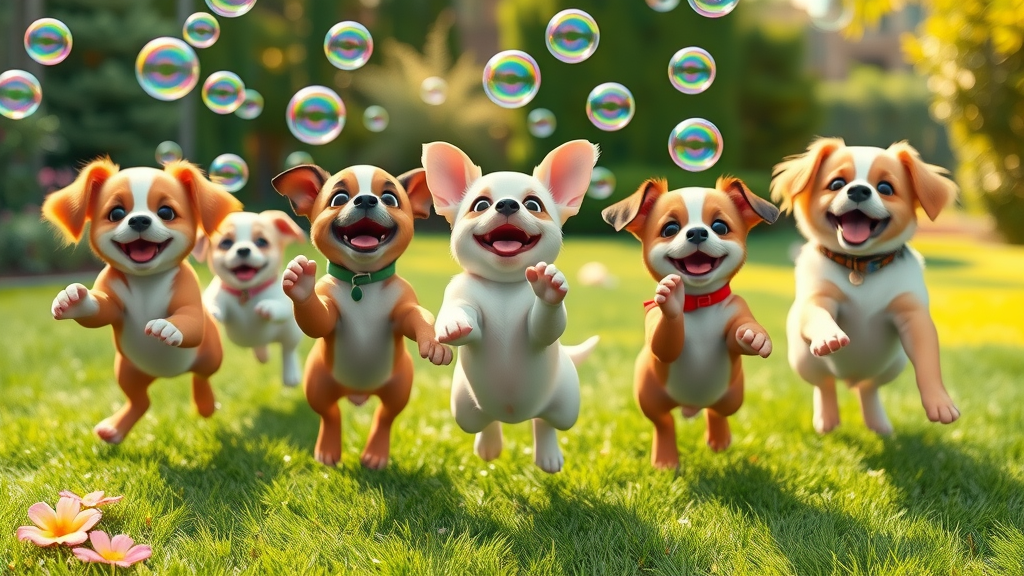
Sometimes the simplest games are the most joyful. With pet-safe bubble solution, blow bubbles and let your dog chase and pop them. The movement and unpredictable flight patterns make this a stimulating game, especially for puppies or lower-energy dogs. Supervise closely to ensure your pup doesn’t ingest too many bubbles, and avoid using human bubble mix—DIY dog-safe solutions are best. This outdoor game for dogs keeps even rainy day play lively and light-hearted.
13. Hurdles & Hoops: Building Simple Outdoor Games with Household Items
- How to use everyday objects for easy agility courses
- Motivating shy or cautious dogs to try new challenges

You don’t need fancy equipment to run a mini-agility session—use a hula hoop to jump through, cones to weave, or cardboard boxes to crawl under. Place obstacles at safe, reachable heights and introduce them one at a time. Reward small victories (even a curious sniff of the hula hoop can be huge for a cautious dog!) with tiny treats and encouragement. Agility games boost your dog’s confidence, shape memory, and add variety to their usual routine, all from the comfort of your own backyard.
14. Follow the Leader: Outdoor Games for Dogs to Build Focus and Trust
- Adapt the game for group play or one-on-one bonding
This interactive outdoor dog game is ideal for dogs of all energy levels. Walk, jog, zigzag, or hop around the yard and encourage your dog to mimic your every step. You can add “freezes” and change pace to keep them focused. If you have more than one dog (or family members), turn it into a group game—switch leaders often to keep things fresh and promote teamwork.
15. Doggy Relay Races: Outdoor Game Ideas for Multiple Dogs and Family Participation
- Simple relay ideas for dogs, kids, and adults
- Promoting teamwork and energy burn
Relay races are the best way to get everyone—canine and human—laughing and moving. Set up a series of mini-challenges (run to a cone, sit, roll over, dash back) and hand off the “baton” (a toy or collar) each time. This high-energy fun game is perfect for parties, playdates, or anytime you need to zap zoomies fast. Every furry friend cooks off calories, builds confidence, and enjoys strong social learning.
Table: Quick Comparison of Outdoor Dog Games by Energy Level, Space Needed, and Equipment
| Game Name | Energy Level | Space Needed | Equipment Required | Mental Stimulation | Suitable For |
|---|---|---|---|---|---|
| Obstacle Course Challenge | High | Medium-Large Yard | Cones, Hoops, Boxes | Yes | All Ages/Breeds |
| Fetch with a Twist | Medium-High | Any Outdoor Area | Tennis Balls, Rope Toys | Moderate | Most Dogs |
| Tug of War | Medium | Small-Large | Rope Toy | Some | All, esp. Bonding |
| Treasure Hunt | Low-Medium | Any Size | Treats, Toys | High | All Dogs |
| Water Games | Medium-High | Yard/Park | Kiddie Pool, Water Toys | Moderate | Water-Loving Dogs |
| Hide and Seek | Medium | Any | Treats, Owner | High | Recall Training Dogs |
| Frisbee Frenzy | High | Large | Dog Frisbee | Some | Athletic Breeds |
| Soccer-Style Kicks | Medium | Medium | Dog Soccer Ball | Moderate | All, Group Play |
| Muffin Tin Game | Low | Small Space | Muffin Tin, Tennis Balls, Dog Treats | High | Mentally Stimulated Dogs |
| Nature Walk Adventure | Medium | Trail/Outdoor | Leash, Treats | Moderate | Adventurous Dogs |
| Simon Says | Low-Medium | Any | None | High | Dog Training |
| Bubbles Bonanza | Low | Small-Medium | Dog-Safe Bubbles | Moderate | Puppies/All Dogs |
| Hurdles & Hoops | Medium | Small-Medium Yard | Hoops, Household Items | High | Shy/Cautious Dogs |
| Follow the Leader | Low-Medium | Any | None | Moderate | All Dogs |
| Doggy Relay Races | High | Medium-Large | Toys, Treats | Some | Multi-Dog/Families |
Quotes from Expert Trainers: The Power of Outdoor Games for Your Dog’s Wellbeing
“Enriching your dog with daily outdoor games supports not only their physical health but also deepens the bond you share.” – Certified Canine Trainer
“Outdoor games for dogs are an unbeatable way to prevent problem behaviors by satisfying both their body and mind.” – Veterinary Behaviorist
Pro Tips: Making Outdoor Dog Games Safe and Adaptable
- How to modify outdoor games for seniors, puppies, and special-needs dogs
- Weather and surface considerations
- Choosing safe, durable toys and equipment

Adapt every outdoor dog game to suit your dog’s age and ability. For seniors or joint-sensitive pups, favor low-impact, mentally stimulating games like the muffin tin or treasure hunt. Puppies benefit from short, simple sessions using gentle toys and lots of praise—opt for soft grassy surfaces to cushion clumsy tumbles. Always inspect toys for wear and replace them if damaged. Avoid playing on slippery patios or rough terrain that can cause injury, and watch the forecast: play early or late on hot days and ensure there’s always shade and water at hand.
For dogs with special needs, choose games that let them succeed at their own pace. Supervise all dogs closely, especially when mixing age groups, and cherish the memories you make together.
How Outdoor Dog Games Promote Physical Health and Mental Stimulation
- Benefits for weight control, cardiovascular health, and behavior
- Why mental stimulation games are crucial for indoor and outdoor dogs alike
Outdoor games for dogs are proven to maintain healthy weight, boost cardiovascular strength, and reduce anxiety-driven behaviors. Incorporate regular, vigorous physical exercise via fetch, obstacle courses, or soccer to stave off extra pounds and keep your dog’s heart in peak condition. Yet don’t overlook brainy games like treasure hunts or the muffin tin challenge. These keep even indoor dogs mentally stimulated, drastically cutting down on boredom and problem behaviors.
The healthiest fur babies are those who are routinely challenged both physically and mentally; rotate your games often, try new setups, and watch your dog thrive from nose to tail!
Top 10 Quick Outdoor Games for Dogs When You're Short on Time
- Muffin tin game
- Hide and seek
- Quick fetch
- Chase me
- Backyard sack race
- Soccer goal
- Shell game
- Mini agility
- Recall tag
- Sprinkler run
Innovative Outdoor Games for Dogs: Keep Playtime Fresh and Exciting
- Experimenting with new toys and DIY outdoor game ideas
- Rotating games for dogs based on weather, time, and dog mood
Boredom is banished when you keep your rotation creative. Experiment with homemade games using cardboard boxes, recycled bottles, or puzzle mats. Try out commercial toys that challenge memory and scent detection. Adjust activity intensity to match weather and your pup’s mood—cool misting games for summer, scent work on rainy days, or gentle relay races for high-energy mornings. This flexibility ensures your dog remains eager to play day after day.
People Also Ask: Expert Advice on Outdoor Dog Games
What to play with your dog outside?
- Explore a variety of outdoor games for dogs including fetch, obstacle courses, tug of war, treasure hunts, and interactive water games to engage your dog’s body and mind.
How to make outside fun for dogs?
- Make the outdoors inviting with creative outdoor dog games, rotating toys, safe spaces, and by incorporating scent work, agility, or adventure walks to keep your dog excited and engaged.
How to keep a dog entertained outside while at work?
- Use puzzle feeders, safe chew toys, and set up automated fetch machines or interactive games for dogs; always ensure water and shaded rest zones are available.
What is the muffin tin game for dogs?
- The muffin tin game is a mental stimulation activity where treats are hidden under tennis balls or toys placed in the cups of a muffin tin, encouraging your dog to use their nose and problem-solving skills to find the rewards.
Frequently Asked Questions About Outdoor Dog Games
- Can outdoor games replace regular exercise walks for dogs?
- What are the best outdoor games for high-energy dog breeds?
- How often should I change up outdoor game routines?
- Are there any outdoor dog games to avoid with senior or joint-sensitive dogs?
Outdoor games are a valuable supplement to regular walks, offering variety and engaging your dog’s mind. However, daily walks remain essential for exploration and relaxation, complementing play sessions to ensure your dog’s needs are fully met.
High-energy breeds thrive on fast-paced games like frisbee, relay races, and challenging obstacle courses. Frequently change up the “games to play” and increase complexity—with consistent training and plenty of rewards, these games help channel energy constructively.
Rotate your selection every few days to keep your dog engaged and prevent boredom. Introducing two or three new games each week helps your dog learn, stay mentally and physically stimulated, and look forward to playtime.
Steer clear of high-impact jumping or rapid direction changes if your dog has joint issues. Choose gentle games like the muffin tin, scent trails, or slow-paced fetch with a soft toy for safe and happy play.
Key Insights: The Lasting Impact of Outdoor Games for Dogs
- Regular outdoor games boost fitness, confidence, and training skills.
- Outdoor play reduces anxiety and destructive behaviors in most dogs.
- Engaging outdoor dog games create memories and lasting loyalty between you and your dog.
Start Your Adventure: Find an Outdoor Dog Game Your Pup Will Love
- Keep your pup happy, healthy, and engaged—discover fun, easy activities for dogs that boost bonding, burn energy, and beat boredom every day!
Add a new outdoor dog game to your routine today—watch your pup’s joy grow, energy balance, and your bond deepen with every playful session!
To further enhance your dog’s outdoor playtime, consider exploring these additional resources:
-
The American Kennel Club’s article, 7 Backyard Games to Play With Your Dog , offers a variety of engaging activities, including hide-and-seek and agility courses, to keep your dog physically and mentally stimulated.
-
Purina’s guide, 5 Fun Outdoor Dog Games: Playing with Dogs , provides creative game ideas like swimming and football, tailored to suit dogs of all ages and energy levels.
Incorporating these activities can add variety to your dog’s routine, ensuring they remain happy, healthy, and engaged during outdoor play.
 Add Row
Add Row  Add
Add 


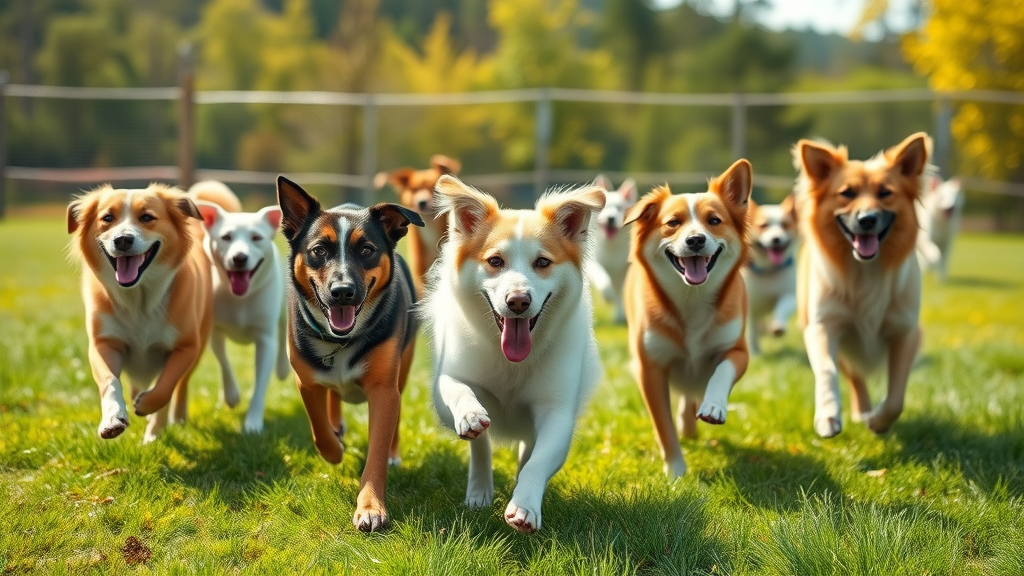

Write A Comment